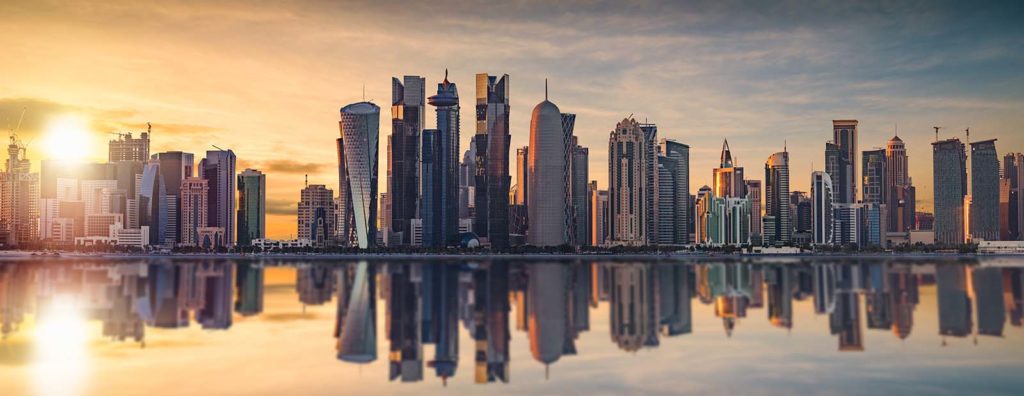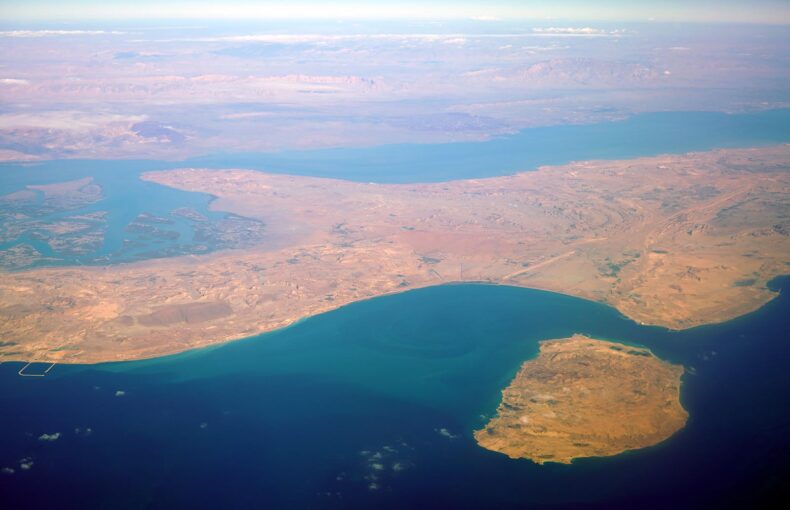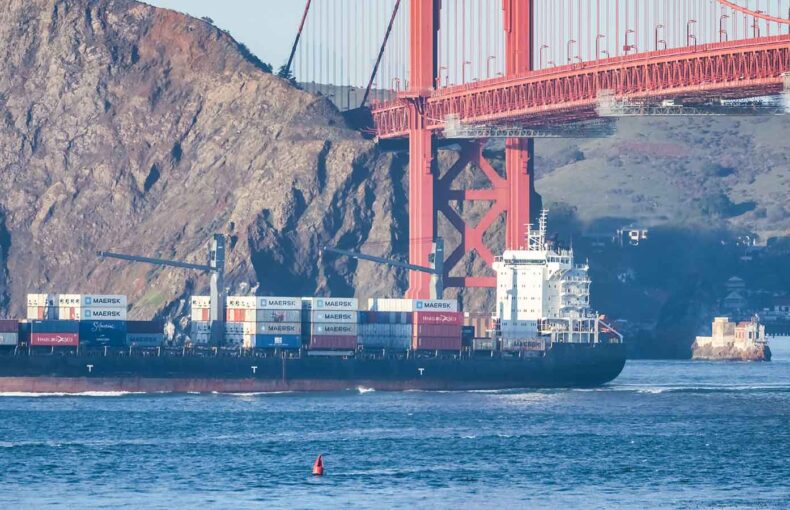How Qatar is Using Logistics and Sustainability to Shape the Future of the FIFA World Cup
The 2022 World Cup will stand out in the minds of football fans for years to come. For the first time, fans of The Beautiful Game from across the globe will congregate in the Middle Eastern nation of Qatar to see the greatest footballers in the world represent their nations.
In order for the tournament to go on without any noticeable interruptions, stakeholders will be relying heavily on supply chain management and logistics. From building the stadiums, to coordinating accommodations for tourists, maritime data will play a big role in the efficiency of logistics operations.

What Makes the 2022 World Cup in Qatar Different From Previous Tournaments?
One of the most amazing aspects of the FIFA World Cup is the fact that no two tournaments are ever exactly alike. From the players on the pitch to the scenes in the areas surrounding them, each tournament has moments that make them unique in the minds of viewers across the globe. When it comes to the upcoming 2022 FIFA World Cup, there are an astounding number of storylines that separate it from tournaments in years past. For instance, it can be assumed that it will be the final opportunity for global sensations Leo Messi and Cristiano Ronaldo to win it. It could also feature the return of nations that missed out on the last tournament like the United States and Denmark. Other ways the upcoming tournament could stand out include:
The First Winter World Cup
Due to hazards associated with extreme heat, the decision was made to move the 2022 World Cup from the traditional summer window to late November and December. With some days reaching a scorching high of 50°C in the summer months in Qatar, this decision is not overly shocking and will surely be appreciated by players and attending fans.
Although a winter tournament alleviates many weather-related stresses, planners and stakeholders still need to be prepared for anything and everything, including rainfall. Although heavy rainstorms are rare in Qatar, they are very destructive and often cause flooding. With an event of this size, accurate weather forecasting will be vital to minimizing any major disruptions that unfortunate weather can impose. From ground and air transportation, to agriculture, to ports and shipping, advanced weather insights and analytics will have a direct impact on the costs and success of the event.
Out-of-the-Box Accommodations
There are a variety of firsts that will likely take place during the upcoming FIFA 2022 World Cup in Qatar. In addition to being the first winter World cup, anothe first is the fact that cruise ships will be used as a source of accommodation during the event. Officials tasked with planning accommodations are anticipating 1.2 million football fans descending on the State of Qatar and it’s no surprise that they were forced to think outside of the box for solutions. This requires high level logistics management and planning to determine which ports are accessible for unloading containers, and which are occupied for the purposes of docking a ship providing accommodations.
Technological Innovation and Sustainability Efforts
Qatar’s goal for sustainability during the tournament is clear. Qatar launched a joint sustainability strategy with FIFA to make the tournament fully carbon neutral. The cutting-edge technologies that are planned to be leveraged during the FIFA 2022 World Cup in Qatar are impressive and could redefine how future tournaments are executed by other host nations, as 2022 will be the first year a World Cup game is played in a “transportable stadium.” Qatar will be using recycled shipping containers as venues for the event and will be donating more than 170,000 seats after the event to countries in need of sporting infrastructure. Venues will also have retractable roofs that are capable of limiting energy usage throughout the event.
Qatar’s stadiums will not only be equipped with energy-efficient and non-toxic LED lighting, but it will also have cooling technology that is more energy-efficient and sustainable than common techniques. The outside air will be cooled through solar-powered air conditioning fans, enter the stadium through grills in the stands and large nozzles at pitchside, and then be drawn back using an air circulation technique to be re-cooled and filtered again. The energy used in the stadiums will even come directly from a solar panel farm located outside Doha.
Qatar has gone a step further in helping to provide an accessible World Cup experience for all. Sensory viewing rooms will be available in stadiums for children and young adults with learning difficulties, autism, or sensory processing disorders. These rooms will feature controlled lighting, soft furnishings, toys, and other activities that were installed by the Qatar Institute for Speech and Hearing.
Qatar Playing Host: What’s the Big Deal?
In recent years, major sporting events have been less reluctant to bring their events into the Middle East. The willingness that Middle Eastern nations have shown in recent years to host major sporting events has a multitude of benefits for the region. First, it helps display to citizens of other nations throughout the world that the Middle East is open for business from a tourist perspective. Additionally, hosting major sporting events serves as an additional revenue stream for local shops, restaurants, hotels, and other businesses that can benefit from an influx in traffic thanks to all the new visitors. Even though the Middle East has yet to host an event of the same magnitude as the World Cup, it’s no stranger to hosting other types of sporting events. Some of those events include:
- Saudi Arabian Grand Prix
- Abu Dhabi Grand Prix
- Qatar Grand Prix
- WWE Crown Jewel (2018, 2019, 2021)
- WWE Elimination Chamber (2022)
- 2019 AFC Asian Cup
- FIFA Club World Cup (2010, 2017, 2018, 2019, 2020, 2021)
Logistics and the Role of Maritime Data
While most of the action regarding the 2022 World Cup will be focused on the events taking place on the pitch, the action off the pitch is necessary for making sure the event goes on as planned. Ensuring that supplies make their way into the right hands on time is of the utmost importance to planners and stakeholders of the 2022 World Cup. The chairman of GWC, the Official Logistics Provider of the 2022 World Cup, highlighted the critical role of logistics, as he stated, “From venue management, broadcasting, and cold chain logistics, to shipping, customs clearance, warehousing, and distribution, down to the logistics management of merchandise, souvenirs, food, and beverage—all details, large and small, will require end-to-end tracking and execution, from point of entry to point of use, in addition to highly coordinated reverse logistics.”
Leveraging Shipping Trends and Optimizing Resources
Performing an analysis on shipping trends and patterns starts with having the right insights, which is where historical AIS and Density Maps can come into play. Logistics and supply chain companies need to have the full picture when it comes to possible shipping delays and route deviations. Historical AIS data provides critical insight for conducting analyses of global ship movements. Historical AIS data makes it easier to make more calculated decisions regarding vessels that are used to make deliveries related to the World Cup 2022 tournament. With Historical AIS data, planners can reduce potential risks by using historical seasonal patterns to help plan safe travel routes and potentially avoid problematic behavioral patterns of vessels that could jeopardize arrival times.
Density maps make receiving in-depth vessel pattern analysis a breeze by transforming millions of AIS messages into individual geospatial data points. With an increase in ship traffic volume during such a large event, being able to quickly visualize and access vessel traffic data will reduce the amount of time it takes to convert AIS messages into actionable data. Stakeholders will have the ability to predict traffic flows, increase voyage efficiency, and develop mitigation measures. These capabilities would ultimately reduce fuel consumption and emissions and would assist with Qatar’s efforts to reduce the environmental impact of the tournament.
Less Guesswork and More Surety
When stakeholders learn about hiccups in the supply chains too late, costly problems can occur. That’s why it is beneficial to leverage real-time AIS data, as it provides stakeholders with an accurate picture of a ship’s voyage and the ability to learn about potential delays as early as possible so that they can take action immediately. Having an up-to-date and accurate view of shipping activities can be pivotal in helping stakeholders avoid the expenses that come with unexpected delays.
What the 2022 World Cup in Qatar Means for the Future
There are a variety of ways the FIFA 2022 World Cup will stick out in the minds of participants, fans, and workers doing their due diligence to ensure everything goes on seamlessly. From the use of cutting-edge technology to the innovative actions taken to reach sustainability goals, the 2022 FIFA World Cup could be the tournament that changes the way future tournaments are conducted. While fans enjoy the breathtaking goals, participants who had roles in putting the event on played a huge part in successfully carrying out the event. While the date of the tournament is likely to revert back to the middle of the year after it leaves Qatar, certain aspects of it, like a focus on sustainability and technology, are likely to remain in 2026.
 Written by
Written by


